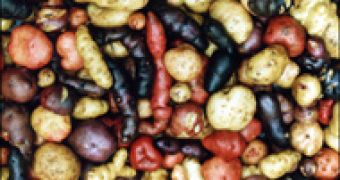Could you imagine your life without French fries or chips?
What boosts more the modern obesity levels, if not potato based diet?
Ancient Incans deified them; while in Ireland, during the 19th century crop fail due to potato fungi triggered famine, death and massive immigration to America.
Today, potato is the world's fourth largest food crop, after corn, wheat and rice.
Now, genetics come to explain where the appreciated tubers came from, pointing to two wild ancestors, a challenge to the traditional theory of the straightforward origin.
The starch rich tubers haven't always been that smooth and tasty. Wild potatoes from South America look like gnarly fingers and they are damn bitter, no matter how they are cooked. Two species of wild potatoes are known: one from Chile, the other in the Peruvian Andes. Even if very similar, the two species differ genetically.
For long, it was assumed that European potatoes, the base for all modern cultivated potato varieties, originated in Chile, as the Chilean lowlands' clime resemble more Europe's environment.
But the first records of the potato outside America, in 1567, are not from Europe, but the Spanish Canary Islands, off northwest Africa, from which they entered Europe. And the Canary potatoes resemble more the Andean species.
Now, the genetic analyses were made by David Spooner, a horticulturist with the U.S. Department of Agriculture and a researcher at the University of Wisconsin, Madison. It resulted that some potatoes on the Canary Islands had Andean origins while some Chilean.
"The idea that it was a single introduction from Chile just doesn't stand up. Modern potatoes are a combination of the two ancestral species." said Spooner.
Different varieties could have reached the islands at various times. To complete the history of the potato, European and African crops, too, must be analyzed.
"Beyond illuminating the past, understanding the origins of potatoes can help scientists move into the future. If we know what genes or ancestral species are involved in the evolution of the modern potato, we may be able to pull out useful traits and make a better potato." said University of Utah botanist Lynn Bohs.

 14 DAY TRIAL //
14 DAY TRIAL //